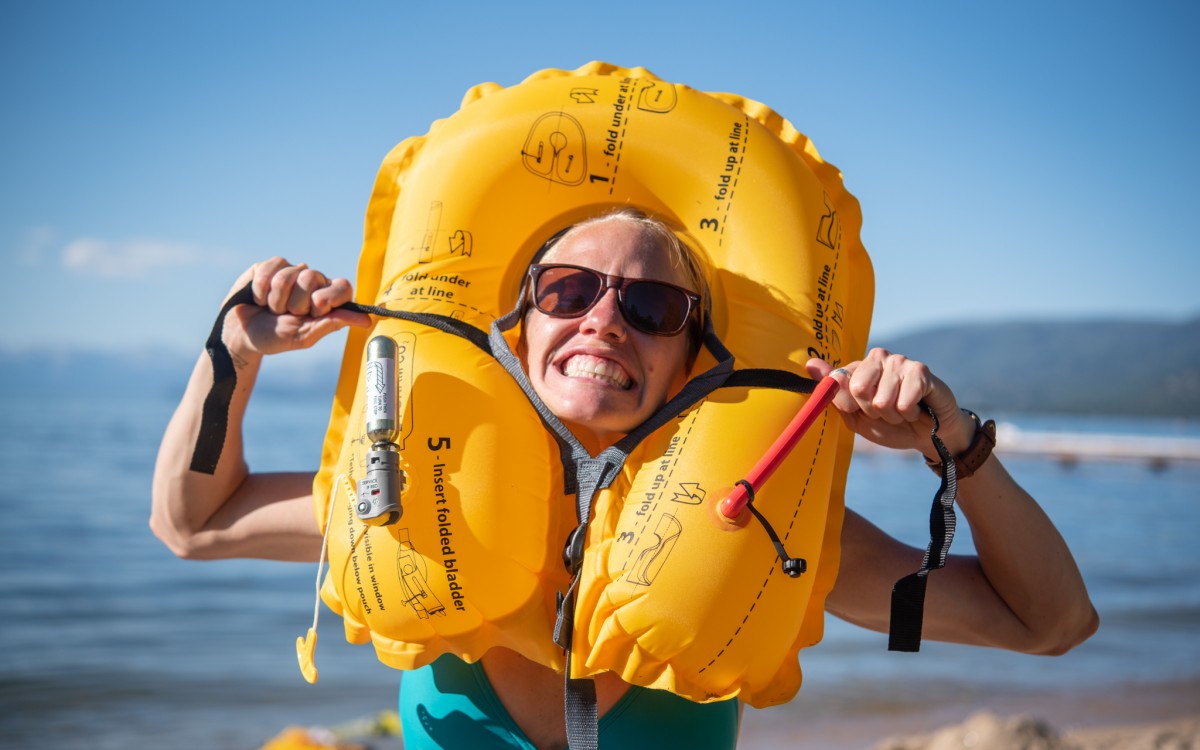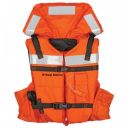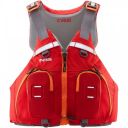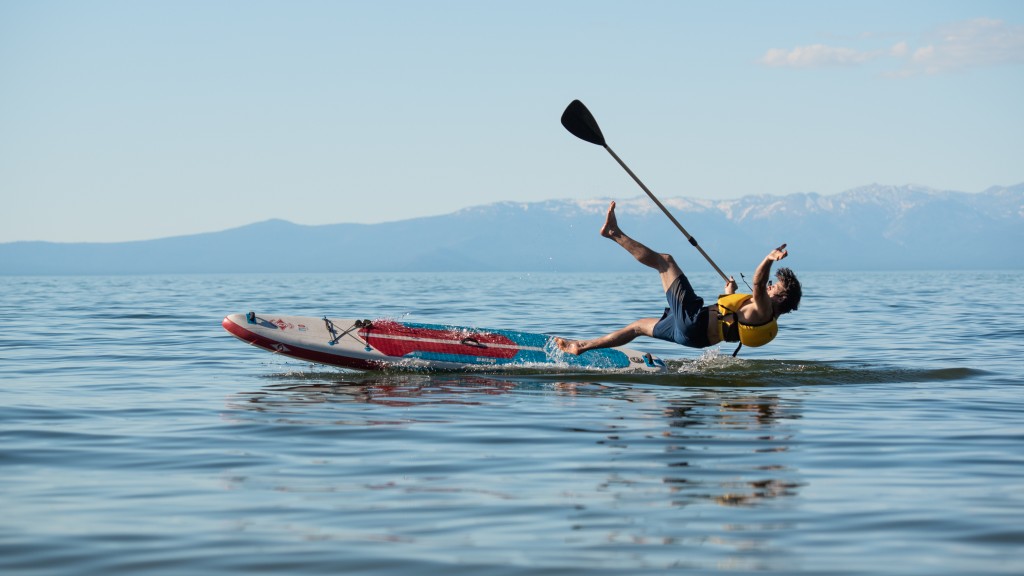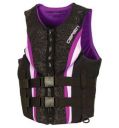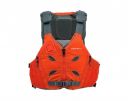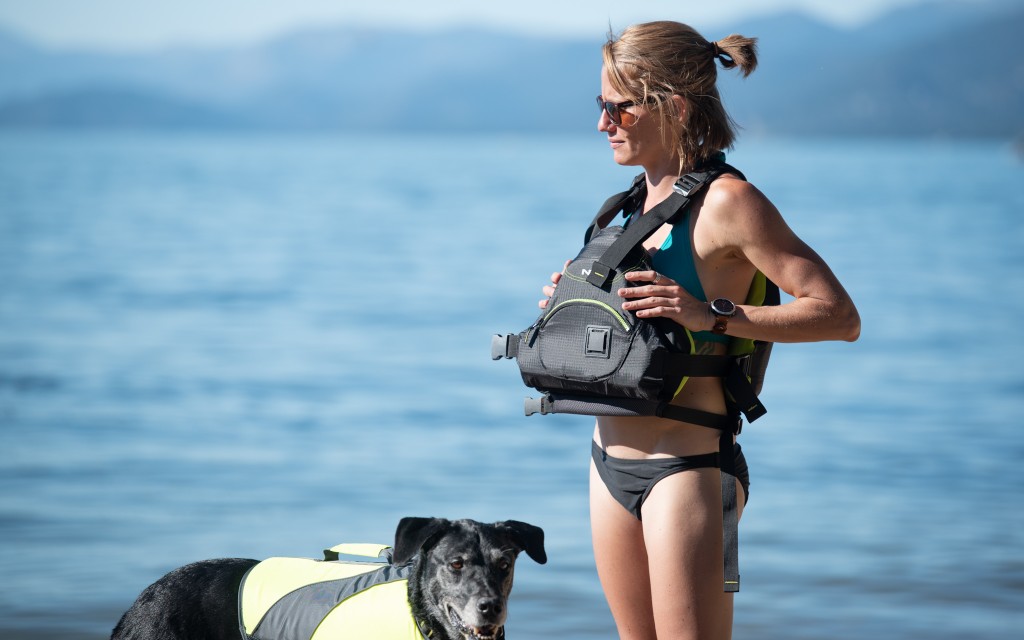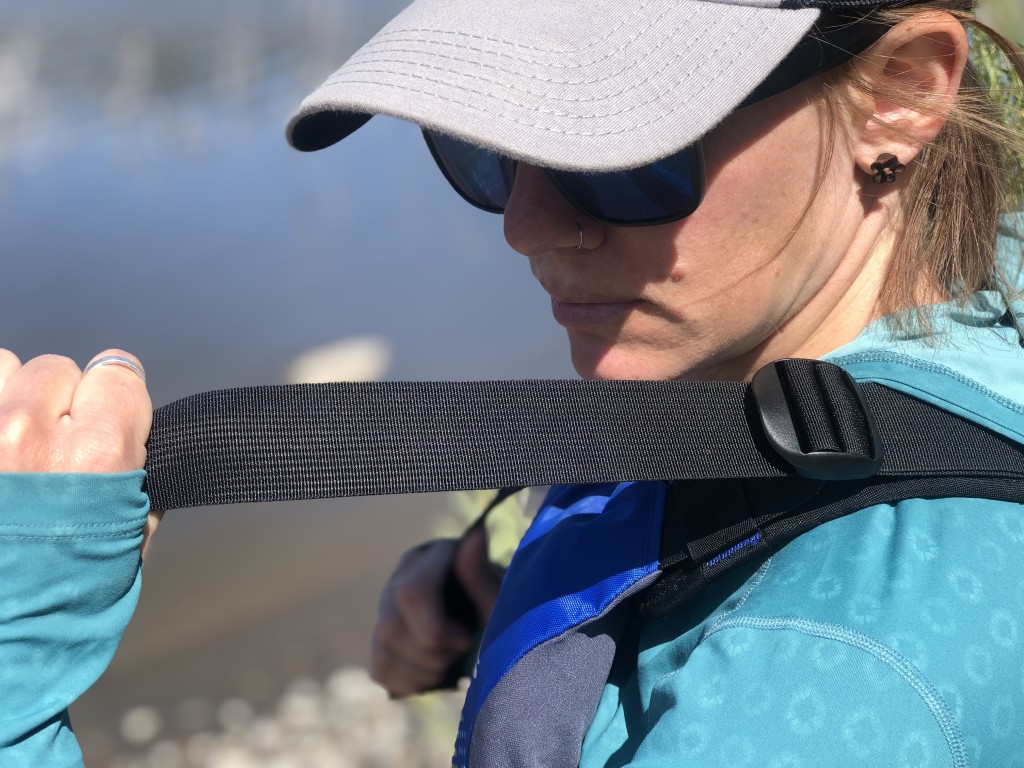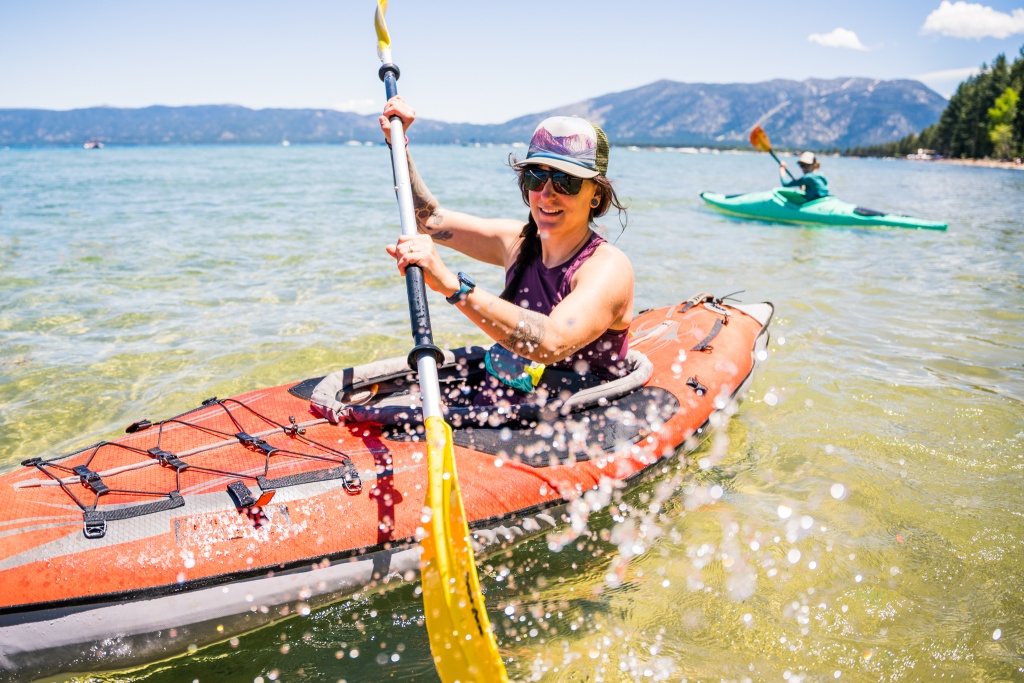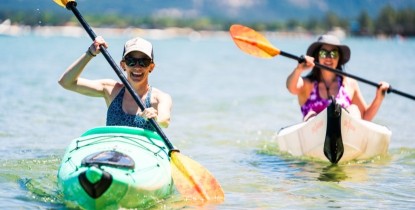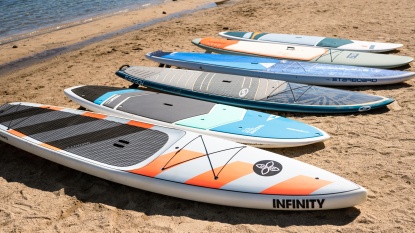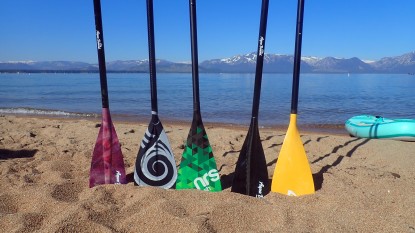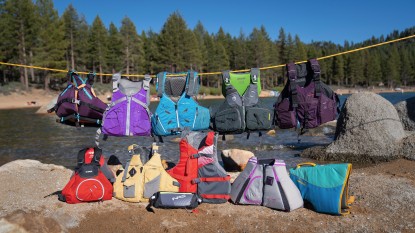Choosing a PFD is the same as choosing a shirt, right? Just pick one that looks good? While that's tempting to do, it's also likely to leave you unsatisfied and unhappy with your life jacket, making you unlikely to wear it. Our lead tester for this category has been an avid paddler for as long as she can remember, giving her a deep understanding of what makes the difference between a PFD you'll enjoy wearing and one you'll end up leaving on the bottom of the canoe. When it comes to a piece of gear that's literally designed to save your life, it's important to get the right one. After all, the best PFD is the one you're actually wearing when you need it to save your life! In this guide, we'll walk through all the options and how to choose the best one for your preferred water activity.
Required by Law
Legally, there must be a properly fitting, US Coast Guard-approved life jacket on board for every single person on a recreational vessel. This applies to large off-shore cruises as much as it does to your speed boat, kayak, or paddleboard. While legally speaking, you don't have to wear your life jacket to be in compliance with the law, you should want to. According to the US Coast Guard and the American Boating Association, over 80% of drownings occur when the victim is not wearing their life jacket. Even more disturbing, over 50% of drownings occur close to shore when life jackets are stowed on board but not worn. Skydivers wear their parachutes, football players wear their helmets, and you put your seatbelt on when you get in a car — why would you not wear your life jacket on a boat?
Each state has its own set of laws and regulations governing children wearing life jackets. In general, anyone under 13 must wear a USCG-approved life jacket while the vessel is underway. This age changes from state to state. Check your local regulations before you go to make sure you're in compliance and have a fun — and safe — time!
Types of PFDs
So you know you need a life jacket, but what kind is right for you? The US Coast Guard outlines five types based on their best usage.
Unless you're a commercial boat captain or captaining a large vessel heading off-shore, you're likely interested in a Type III PFD or a Type V flotation device with Type III usage. Type III jackets are the most comfortable and cover all kinds of activities, from fishing to wakeboarding and kayaking to paddleboarding. Our review covers only the types of PFDs used during these kinds of recreational activities, with our biggest focus on paddle sports. If you're after a life jacket for other on-water uses, check out ourbest life jacket review.
Like so many activities, the world of PFDs and life jackets has plenty of jargon - but what's accurate? Well, a life jacket is technically a Type I PFD, designed to tip you face-up in the water and potentially save your life even if you're unconscious and/or in rough waters. A PFD (or Personal Flotation Device) will keep a conscious person afloat in calm waters. However, the term personal flotation device can be applied to all buoyancy aids that you might wear as extra flotation.
So, while technically all life jackets are PFDs, not all PFDs are life jackets. If this isn't unclear enough, to the general public, the Coast Guard applies the term life jacket to all wearable PFDs, and reserves the term PFD for more technical applications. At the end of the day, the odds are that no matter which term you use, people will know what you're talking about.Choose Your Style
Now that you know you're after a Type III PFD (or Type V, depending on your specific intended activity), how do you go about deciding which one is the right one? First, consider what kinds of activities you plan to do with your life jacket. Are you leisurely lying in a canoe getting a tan with friends? Are you kayaking Class IV rapids out west? Are you fishing from a kayak in your favorite river for some tasty dinner? Are you languidly paddleboarding up the shore on vacation? There are various styles of vests that are better suited to certain activities than others.
Full Coverage Vest
Standard Vest
Low Profile
Inflatable Belt
If you like taking your dog with you everywhere - even on the water - don't forget that your pooch needs protection too. While most dogs can swim, not all are great swimmers. Dogs can fatigue easily, especially if they're not used to frequent, long swims. Additionally, having a handle on top of your furry friend makes it easier to haul them back on board from the water. If you love your canine, a doggie life jacket is a must-have accessory for all your boating excursions.
While you can try on and analyze hundreds of PFDs, the best life jacket is the one you're wearing. What this translates to is comfort. If you've been talked into a super-specific type of vest by an overzealous salesperson, but you hate how it feels on you, you're probably not going to be wearing it when you find yourself in a life-threatening situation. No one ever expects to drown when they head out on the water, so wearing your life vest is key.
Choosing Your Fit
Most PFDs are sized by weight and chest circumference measurements. Standard adult life vests are for 90+ pound individuals, but always read the label of your life jacket. If you're buying for a child, be sure to follow the guidelines — a life jacket is not something you "grow into". When measuring your chest circumference, most models will ask for the largest point around your torso. This isn't a time to think about future dieting dreams and try to squeeze into a smaller size. As this is a piece of equipment that's designed to aid you in life-threatening situations, honesty is key. Measure yourself — or better yet, have someone else measure you — at your torso's widest point and use that number to guide your size choice. Unlike regular clothing, sizing a life jacket isn't something you should guess at. Be sure to read the size measurements for the vest you're considering, as there are no "standard" sizes across styles or brands.
Adjusting Your Jacket
Just like a backpack, you should readjust your PFD every time you put it on. This means loosening all the straps every time you take it off and retightening them all again when you put it back on. Also like backpacking, to ensure the best fit of your life jacket, you should work from the bottom up:
- Put your jacket on and zip and/or buckle it closed. Find the lowest set of adjustable straps and tighten those around your waist — usually about the thinnest portion of your torso or just above your hip bones. It should be snug enough to not move but not so tight you can't sit down.
- Continue tightening straps as you work your way up. Again, snugness is key. You want it to be tight enough to stay put when you fall in the water, but not so tight it's uncomfortable to wear while you play.
- End with the shoulder straps, tightening them just enough to take up the slack. You don't want these so tight it pulls the jacket up to your neck or ears.
- Test the fit: Raise your arms over your head and have someone else pull up on the shoulder straps. You'll know it's properly adjusted if it doesn't move much. If it slides up to your chin, it's too loose or the wrong fit. Try adjusting again or pick a different vest.
While safety is obviously the biggest concern when wearing a PFD, remember that the best life jacket is the one you like to wear. Put it on right and take the time to find one that's comfortable for you.
Unisex vs. Women's
The majority of PFDs are considered a "unisex" fit and tend to work equally as well for men and women. However, if you find yourself identifying as a woman with a high bust to waist ratio, unisex might not be the most comfortable fit for you. Women's-specific options tend to have thinner padding on the top of the jacket across the chest and concentrated padding below to leave room for larger breasts. Some even have specific cut-outs or shaped internal foam to facilitate containing your girls rather than smashing them. However, many manufacturers make unisex jackets with tapered foam at the top already, so you may not need anything more. Additionally, you can, unfortunately, find many "women's" vests where the only difference is that it comes in pink or purple or other colors deemed "feminine" (cue the eye roll). In our experience, some women's PFDs are awesome, and some are no different than a unisex vest. It all comes down to your shape and comfort level, so try them on, and don't be afraid to return or exchange online purchases until you find the right one for you.
Your life jacket is designed to save your life. However, they all have specific usage and care directions that are different across various styles and brands. We know there are tons of things we all skip reading the directions for, but your PFD shouldn't be one of them. Read and adhere to the guidelines and directions that come with your specific life vest.
Test Your Mobility
Whenever possible, try on your PFD before you buy it. Found a great deal online? We get it — save the cash and snag the deal, but only if you're sure you have the option to return an uncomfortable item (not just a defective one). When you do try on your jacket, run through a few tests to see if it works for you:
- Put it on! Buckle and zip it up. Adjust it accordingly. See if you like how it feels and how it works. Take it off and repeat the process a few times. Walk around the store or your house, and really be critical of how it feels. If you can't get used to it or you're not happy with how it feels, it's not the right one for you.
- Test it against your skin. If you can try it on without a shirt or while wearing your bikini top, do that. Unless you plan on always wearing it over a shirt, don't only try it on over a shirt. Have a favorite sun shirt or paddle shirt? Try it on over that and see how it feels. Putting a life jacket against your skin is drastically different than trying it on over the cotton t-shirt you wear at home.
- Move in it. Plan on paddling? Make paddling motions or, better yet, grab your favorite kayak/canoe/SUP paddle and do the motion. Thinking of fishing? Practice your casting while wearing your vest. You should always count on swimming, so take a stab at your best stroke motions. Note if the PFD rubs against your arms, sides, or neck. If you find it rubs or moves while you move, it's probably not the right choice for you.
- Sit in it. Odds are you're going to sit down while using your jacket. Even if you're on a SUP or standing in your favorite fishing hole, at some point, we all like to sit down. A PFD that isn't comfortable to wear while you sit is unlikely to be one you'll wear for long.
Care for Your Life Saver
Now that you've found your perfect style and fit, don't forget to take care of your new purchase. Again, read the directions carefully. Most jackets will have cleaning and storage directions included with them that should be followed. Some also have inspection and testing guidelines as well as longevity expectations. In general, you should rinse your PFD after each usage (especially if it involved saltwater), and you can dunk it in soapy water for a more thorough cleaning. Never stick it in a washing machine, and always hang it up to dry it in a shady spot. Store out of direct sunlight and inspect at least once each year for visible damage. Most, but not all, PFDs must be replaced once they have any rip or tear in the fabric, as it can waterlog the inner foam, making it less buoyant. You should also test your PFD in actual water before relying on it and make sure it provides the right amount of float for your comfort.
Conclusion
Sure, any US Coast Guard-approved PFD on your boat will make you in compliance with the laws while you're out. But if you'd like to actually be protected, know you can count on your gear when your life is on the line, and you want to be comfortable while you wear it, finding the right PFD couldn't be more important. We've spent years wearing and testing the best and worst of the bunch, and we hope this guide full of fitting advice helps you find the best jacket for whatever your style of "lake day" (or river or pond or sea…) looks like.

